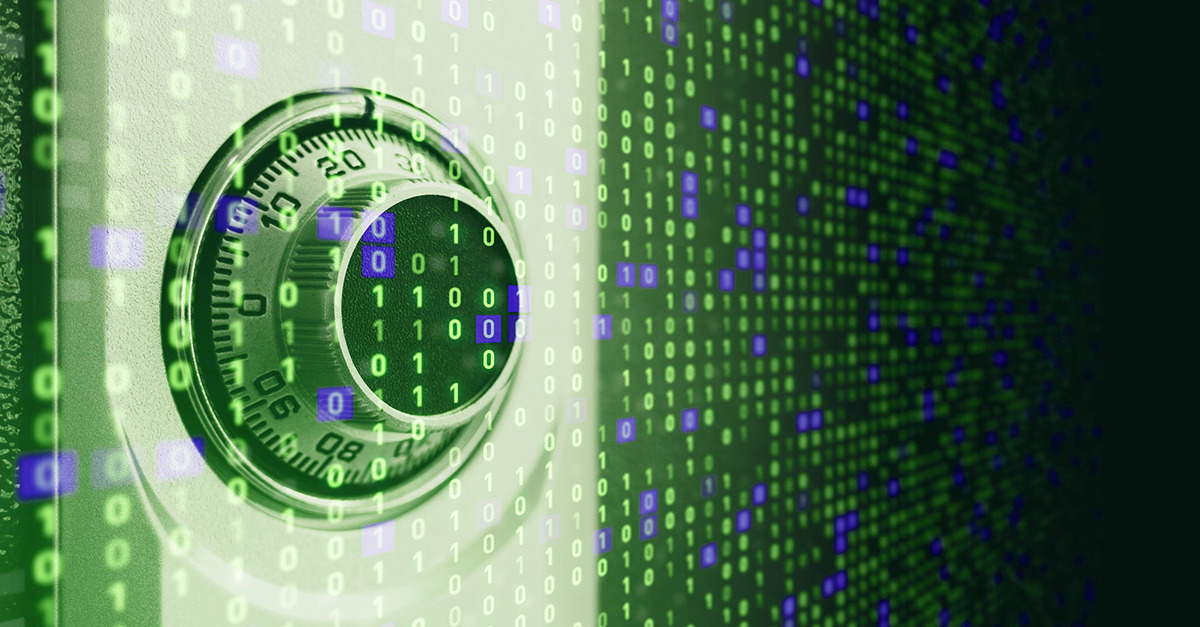It is becoming increasingly difficult to prevent and mitigate cyber attacks as they are more numerous and sophisticated. Security teams often have no way to effectively manage the thousands of alerts generated by disparate security tools. To investigate these potential threats, analysts must also complete manual, repetitive tasks. Combined with the strain of insufficient time and headcount, many organizations simply cannot cope with the volume of security work limiting their incident response capabilities.
To improve their threat management operations, organizations are adopting security orchestration automation and response (SOAR) solutions.
In this article, we define security automation and orchestration, outline its applications, and explain the role of machine learning in developing SOAR tools.
In this article:
- What is security automation?
- The use of AI and machine learning in security automation
- The importance of threat management and how SOAR can help
- Bringing security automation on board
- Security automation with Exabeam Security Management Platform
What Is Security Automation?
Security automation involves the automated execution of security operation tasks, such as scanning for vulnerabilities, without human intervention. Tools like security monitoring, intrusion detection systems and SIEMs use automation to search for threats.
While attacks targeting organizations, like phishing campaigns, are more numerous and sophisticated, technology has permeated every daily activity, generating an ever-increasing amount of data. Security analysts, with the help of security software and tools, sift through data alerts to find hidden threats.
Organizations face a myriad of operational challenges. The combination of: Hiring and retaining security talent; large volumes of alerts and incidents to investigate; and, switching constantly between multiple security tools as part of investigation and response processes, known as “swivel chair” response, commonly result in a seemingly never-ending pileup of backlogs.
Security automation solutions help solve these issues by automatically handling the security tasks that otherwise would need to be done manually by the security team.
Automating repetitive, time-consuming tasks can help:
- Minimize response time
- Reduce human error
- Reduce alert fatigue
What is SOAR?
SOAR stands for security orchestration, automation and response. An ordered collection of software, or stack solution, allows an organization to aggregate threat data from multiple feeds and respond automatically to low-level security events without human intervention.
These technology solutions help define, prioritize, standardize, and automate incident response activities. SOAR services effectively orchestrate internal and external applications. This is useful to augment the capabilities of on-premises SIEM software. The main features of SOAR solutions are:
- Security orchestration—gives a broad view of the organization’s security environment by integrating other security solutions. Correlates both internal data with external threat intelligence feeds, enabling security analysts to find and remediate the threat at the source.
- Security automation—handles security tasks such as query logs, score IPs, and grant or deny permissions for new users. Eliminates the need to use several security tools for the same task by relying on the integration capabilities of the security orchestration tools.
How SOAR can help the SOC
A security operations center (SOC) is the department that deals with security issues within an organization. SOAR solutions free up security analysts to focus on high priority incidents by automating time-consuming tasks, such as collecting threat intelligence, enriching indicators of compromise (IOCs) for context, and containing low-level threats.
A SOAR solution helps security teams by:
- Integrating threat intelligence sources with existing security tools—organizations use a wide array of security solutions that usually don’t integrate well together. This makes security teams lose valuable time, jumping between solutions to analyze and sort through security alerts. SOAR solutions help security staff overcome this “swivel chair” syndrome by integrating external threat intelligence information and different security tools into a single solution.
- Minimizing the damage from security incidents—SOAR solutions automate response activities to contain low-level attacks. This allows security staff to respond to high-priority attacks more quickly, starting mitigation measures earlier.
- Reducing false positives—dealing with false positives often results in alert fatigue, putting companies at risk in the event of a true emergency. Security automation solutions help security staff weed out false positives and elevate only relevant threat alerts.
SIEM vs SOAR
Organizations often use both solutions together because they complement each other. While security information and event management (SIEM) solutions aggregate log data from an array of sources by providing near real-time alerts, SOAR builds on it, integrating a more comprehensive list of tools.
SIEM uses correlation rules and, in some cases behavior analysis to look for anomalies and create alerts. However, traditional SIEM solutions tend to produce too many alerts for a security team to address manually. This is where SOAR solutions come in, complementing SIEM by automating the IR workflows, dealing with low-level threats automatically, and saving time for security teams.
Organizations are choosing to add SOAR to their security tools primarily because it helps security staff focus on high-priority incidents by automating daily, time-consuming tasks. The solution helps analysts give context to incidents by presenting processed data from an array of sources, including threat intelligence platforms, SIEM, and UEBA technologies.
Using Artificial Intelligence and Machine Learning in Security Automation
What is AI?
Artificial intelligence (AI) is defined as the theory and development of computer systems to perform tasks that normally require human intelligence━for example, speech recognition, decision-making, and translation between languages. The term is used to describe the emulation of human cognitive functions such as learning and solving problems.
Machine learning
Considered a part of artificial intelligence, machine learning (ML) enables computers to perform tasks without using specific instructions. Machine learning algorithms work by building a mathematical model based on sample data. They can then use this information to make decisions or predictions without receiving an explicit command to do so.
AI and ML are driving security automation
Organizations are investing in AI and ML applications to improve their security operations and enhance their security automation solutions. According to a KPMG study, global venture capital investments focused heavily on AI development, with $12B in investments, with much of it going to information security applications.
Attackers tend to plan new exploits based on older threats, so organizations can use AI and ML systems to identify indicators of compromise (IoCs) based on previous data. The system can “learn” the patterns of an attacker and scan the environment to identify these threats automatically.
Applications for machine learning in security automation often include self-encrypting, diagnostic and forensic analysis. Companies use ML techniques to process the large quantities of data coming daily through the feeds, searching and identifying threats. Machine learning, combined with security automation, provides an automated response to attacks, enabling organizations to respond in minutes.
The Importance of Threat Management and How SOAR Can Help
Threat management allows organizations to identify threats early in the kill chain, using manual and automated intelligence and threat analytics. SOAR solutions support threat management activities by automating reports and enabling integration between tools. They can then automate responses to security events without human intervention.
Some applications of SOAR for threat management activities include:
-
- Threat hunting—this active defense strategy consists of searching iteratively through the network to detect indicators of compromise that could point to a threat. Automatically searching data across sources can help threat hunters to act more quickly when a threat is detected.
- IR automation—automating containment and mitigation processes can relieve security teams from having to deal with low-level threats allowing them to focus on sophisticated attacks.
- Automating threat intelligence—the automatic aggregation and processing of data can help security teams visualize the relevant information, making correlations to detect attack patterns. This can help security personnel manage their time more efficiently and focus on analytical tasks so they can get ahead of the attackers.
Bringing Security Automation on Board
Security operations issues such as repetitive, time-consuming tasks, and lack of tools integration are solved by using a SOAR solution.
What tasks exactly can a security automation tool perform?
For example, in a malware investigation the system can:
-
- Monitor emails to detect malware infections
- Reverse engineering malware
- Remove the malware
Security Automation with Exabeam Security Management Platform
Exabeam Security Management Platform is a SIEM platform that combines big data with machine learning and security analytics to effectively respond to threats.
Some of its key features include:
- Exabeam Smart TimelinesTM, machine-created timelines of user and device behavior that reduce the time and specialization required to detect and investigate attacker tactics, techniques and procedures.
- Automating and orchestrating incident response. Organizations can respond to security events quickly and effortlessly using prebuilt integrations with dozens of security tools like endpoint detection and response, firewalls, and more.
- Aggregating all your data into a central repository so you can scale security operations with ease.
- Identifying suspicious behavior with ML-enabled user and entity behavior analytics (UEBA).
- Unlimited data collection.
Organizations can quickly benefit from deploying an end-to-end SIEMsolution complete with SOAR, taking advantage of the automation and integration of security tasks and tools to improve their threat intelligence and get ahead of any attackers.
Want to learn more about Incident Response?
Have a look at these articles:
- The Three Elements of Incident Response: Plan, Team, and Tools
- The Complete Guide to CSIRT Organization: How to Build an Incident Response Team
- 10 Best Practices for Creating an Effective Computer Security Incident Response Team (CSIRT)
- How to Quickly Deploy an Effective Incident Response Policy
- Incident Response Plan 101: How to Build One, Templates and Examples
- IT Security: What You Should Know
- Incident Response Steps: 6 Tips for Responding to Security Incidents
- IPS Security: How Active Security Saves Time and Stops Attacks in their Tracks
Similar Posts
Recent Posts
Stay Informed
Subscribe today and we'll send our latest blog posts right to your inbox, so you can stay ahead of the cybercriminals and defend your organization.
See a world-class SIEM solution in action
Most reported breaches involved lost or stolen credentials. How can you keep pace?
Exabeam delivers SOC teams industry-leading analytics, patented anomaly detection, and Smart Timelines to help teams pinpoint the actions that lead to exploits.
Whether you need a SIEM replacement, a legacy SIEM modernization with XDR, Exabeam offers advanced, modular, and cloud-delivered TDIR.
Get a demo today!













